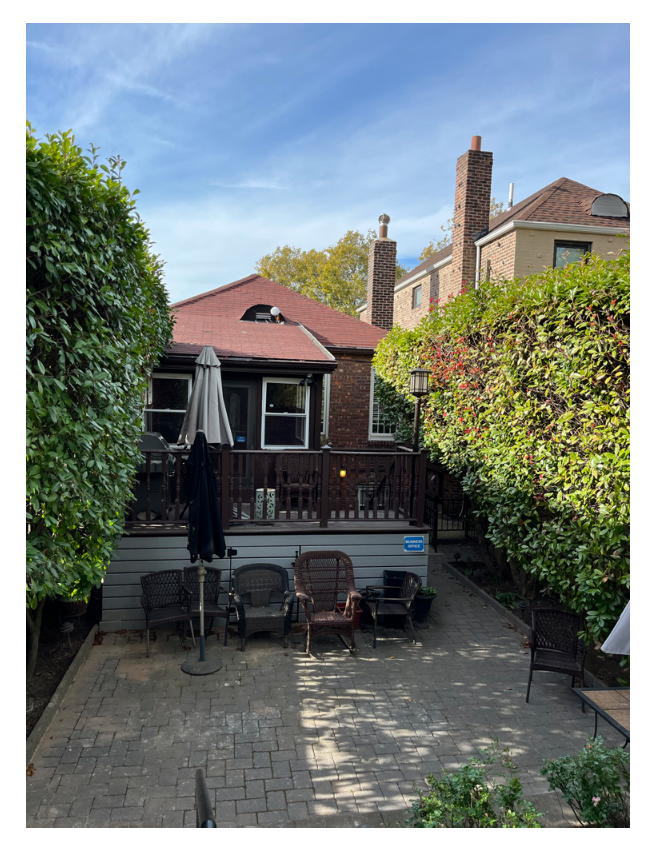Poly Buys House
December 5, 2022
As both the demand for classroom and office space increases on campus, Poly looks towards other avenues for a solution.
As students returned to Poly Prep’s campus this September, they were faced with a wide array of physical changes to their school: construction began on the new Poly Arts Center, teachers’ offices were switched around, classrooms were carved out of available spaces, and the school purchased and expanded into a property on Battery Avenue.
The main goal of all these changes is to try and maximize the school’s use of available spaces while also maintaining and, in some cases, improving their functionality. Take the department offices for instance: Last year, the offices of both the History and the English departments could not effectively house their large number of staff. As an April 2022 Polygon opinion piece pointed out, “The teachers deserve enough room to effectively complete their work and feel comfortable.” Both department offices did not have enough room for all their teachers, and the teachers who did fit had limited space. Over the summer, those departments set up shop in the larger classroom spaces right next door.
“The idea is to create a space where we can all work together, where there’s collaboration going on, where ideas can pass back and forth,” said Peter Nowakoski, the Peter and Isabel Malkin Endowed Chair in English. These changes in space provided enough room for each teacher to have a desk in their respective department office and made way for an improved sense of functionality in the department offices that hadn’t been fully realized prior to the move.
Poly’s Learning Support Department was also dealing with similar space issues in their location above the Student Center. It was close quarters for the department’s five learning specialists, their desks, and the desks for the students.
“We were all in the same space. So when we’re trying to meet with students or meet with each other and other people are doing the same, it’s just like the space itself wasn’t conducive for smaller, more private meetings, either with students or with other faculty members” said Juliet Moretti, the director of Upper and Middle School student learning support.
So when the top floor of the alumni building became available, it was allocated to Learning Support. Instead of there being one room for everything, there are now two offices (one for the Middle School and one for the Upper School learning support specialists) and one room that doubles as Moretti’s office and the actual Learning Center.
By providing a larger space for group work along with multiple independent spaces for one on one meetings, the location change has increased both the versatility and the functionality of the Learning Center. Additionally there are a couple new classrooms on the third floor that bring the Learning Center closer to the academic day to day lives of Poly students who could potentially benefit from the help that the Learning Center can offer.
Prior to its conversion into the new Learning Center, the third floor of the Alumni Building was home to Poly’s business department. Towards the end of last school year, 261 Battery Avenue, a residential property adjacent to Poly’s campus, came on the market and Poly purchased it. Over the summer, Poly staff converted the rooms of the house on the property into office spaces, and the business department, along with the head of facilities moved in.
“There’s a lack of classroom space. We need more classrooms, so this was a great answer: to buy the building that’s pretty much attached to the property and clear out the third floor of the Sabbagh Family Alumni House and make it into classrooms,” said Lynda Casarella, Poly’s chief financial officer.
Today, Poly’s campus is flanked by residential buildings on one side. According to Casarella, Poly’s new property is now one of four plots that they own on Battery Avenue. Two are solely for residential use and one is just an extension of the parking lot, so this new property is unique in the sense that it is a place for employee offices.
Battery Avenue, Seventh Avenue, 92nd Street, and Fort Hamilton all predate the establishment of Poly’s Dyker Heights campus in 1917. A Hey Ridge online article on the history of Battery Avenue stated that “according to an 1898 map in the New York Public Library archives, the land that would become the country day-school [Poly] was proposed to be laid out with streets that would connect Battery Avenue to Seventh Avenue.”
In reference to Poly’s future, Head of School Audrius Barzdukas said “I think our dream is to own this entire parcel of land…because what we want is more student-oriented space. Our school right now is exploding in demand.”
The school is growing, and it is in need of more space. The shifting of offices, the construction of the Poly Arts Center, and the creation of new classrooms are all driven by that need for space, but the purchase of 261 Battery Avenue and its integration into the main campus is particularly revolutionary because of its trailblazing nature as the first real expansion of Poly’s campus.
“We think any time we can get continuous real estate, we should because we are going to be here for the next hundred years,” Barzdukas said. “We’re never going to sell this, and if we could grow it by buying properties next to ours we should.”


























